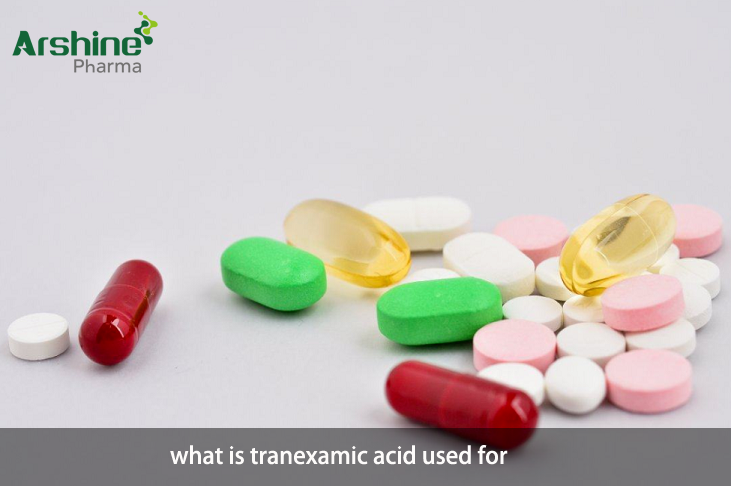Tranexamic acid, a synthetic derivative of the amino acid lysine, has garnered considerable attention within the medical community for its diverse therapeutic applications. This versatile compound has found utility across a spectrum of medical specialties, owing to its unique mechanism of action and its ability to effectively manage various pathological processes involving excessive bleeding or hyperfibrinolysis. Tranexamic acid's multifaceted role encompasses fields such as surgery, trauma management, obstetrics and gynecology, and even certain ophthalmic conditions. Its ability to modulate the body's clotting and fibrinolysis systems has made it a valuable tool in the prevention and treatment of hemorrhagic complications.

what is tranexamic acid used for
In the surgical realm, tranexamic acid has emerged as a vital adjunct in reducing blood loss during a range of procedures. By interfering with the breakdown of fibrin clots, the complex meshwork that forms during coagulation, tranexamic acid helps sustain these clots and thereby minimizes bleeding. This is particularly pertinent in orthopedic surgeries such as joint replacements, spinal surgeries, and fracture fixation, where the risk of substantial blood loss is inherent. Administration of tranexamic acid, often as an intravenous infusion, can substantially curtail the need for blood transfusions, which not only conserves a precious resource but also mitigates the potential complications associated with transfusions, such as infection transmission and immune reactions.
The utility of tranexamic acid extends beyond the operating room, as it plays a pivotal role in managing trauma-related bleeding. Trauma, whether from accidents, falls, or other incidents, can result in profound blood loss that jeopardizes patient stability and outcomes. Tranexamic acid's prompt administration, ideally within the first few hours of injury, has been shown to significantly reduce mortality in trauma patients. By stabilizing clot formation and preventing excessive fibrinolysis, tranexamic acid aids in achieving hemostasis and preserving vital blood volume. This intervention has the potential to be life-saving, especially in cases of severe bleeding and shock.
Obstetrics and gynecology also benefit from tranexamic acid's therapeutic prowess. Excessive bleeding during childbirth, a condition known as postpartum hemorrhage, can pose serious risks to both mother and child. Tranexamic acid's ability to curtail bleeding by enhancing clot stability has made it a valuable tool in managing this obstetric emergency. Administered either intravenously or orally, depending on the clinical context, tranexamic acid has been shown to reduce blood loss and the need for invasive interventions in postpartum hemorrhage scenarios. This application is particularly significant in regions with limited healthcare resources, where access to advanced interventions may be restricted.
Moreover, the ocular field has embraced tranexamic acid's benefits, particularly in the context of certain eye conditions. Subconjunctival hemorrhage, a common and often benign occurrence characterized by bleeding beneath the clear tissue covering the eye, can be distressing to patients. Topical application of tranexamic acid eye drops has been explored as a non-invasive approach to accelerate the resolution of subconjunctival hemorrhages, offering patients a visually appealing solution without the need for invasive procedures.
It is important to acknowledge that while tranexamic acid offers numerous therapeutic advantages, its use is not devoid of potential risks and considerations. As with any medication, the decision to administer tranexamic acid involves a comprehensive assessment of each patient's medical history, risk factors, and potential contraindications. There is a need to exercise caution in patients with a history of thromboembolic events or certain cardiovascular disorders, as tranexamic acid's influence on clot formation could pose an elevated risk in these cases. Renal impairment is another factor to consider, as the drug is primarily eliminated through the kidneys.
In summary, tranexamic acid's multifaceted role in medicine is emblematic of its capacity to address diverse bleeding-related challenges across various specialties. From the surgical theater to trauma management, obstetrics, and ophthalmology, tranexamic acid's ability to enhance clot stability and inhibit excessive fibrinolysis has revolutionized the approach to managing bleeding complications. Its potential to reduce blood loss, minimize the need for blood transfusions, and improve patient outcomes has cemented its position as an indispensable therapeutic tool. Nonetheless, the judicious use of tranexamic acid demands a nuanced understanding of its benefits, risks, and patient-specific factors, underlining the significance of collaborative decision-making between healthcare providers and patients to ensure optimal treatment outcomes.
